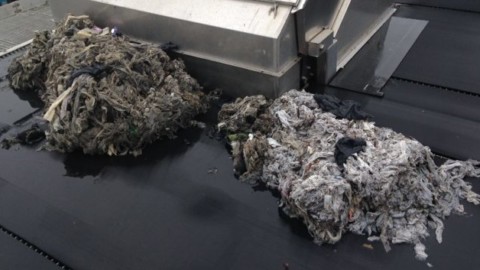In this article, the first of a two-part series, our HDD expert Charles Stockton takes a closer look at the impact HDD technology has had on shore crossings in pipeline installations.
Working in the nearshore environment, especially on Australia’s exposed coastlines, can be very challenging and inhospitable for both land-based and water-based construction equipment.
Neither construction method is ideally suited to construction in this shallow, tidal, high-energy zone; it is too shallow for marine vessels which risk grounding, and too deep and exposed for land-based work which risks flooding and equipment damage.
This is the zone that neither the offshore contractor or the onshore contractor are ideally placed to manage, it is not their normal working environment and it is this challenge that makes shore crossings very interesting to design and construct.
Up to 15 years ago, these crossings would have required large-scale open battered excavations onshore which would connect to a piled cofferdam through the surf zone followed by a dredged channel offshore. A concrete-coated pipe section would be floated into position using floatation devices and hydraulic winches.
The process was very susceptible to adverse weather conditions and tidal variations, as well as presenting numerous challenges for managing worker safety and potential damage to the environment including oil spills and erosion.
What are the benefits of using HDD for shore crossings?
By using HDD to construct the shore crossing, you are totally eliminating the requirement for works to be constructed in the nearshore environment.
Using HDD allows for the crossing length and depth to be increased, which positions the rig back on level land and also allows for the exit to be beyond the surf zone. The rig will be placed well behind the dune system, which can then be preserved to prevent erosion and maintain existing flora and fauna within the coastal corridor.
The exit point will be selected to provide appropriate conditions for positioning subsea structures or providing a suitable transition to offshore pipeline. The exit location must provide sufficient water depth to allow safe vessel access and anchoring as well as diving operations.
The pipelines can be prefabricated onshore and thrust through the bore from entry to exit, or alternatively, the HDD rig can be used to pull back the pipeline from offshore if the pipe is fabricated by a lay barge or towed offshore from a spool base/launching area.
This is particularly convenient if the product pipe is HDPE, which will float without the use of external buoyancy control measures.
What are the main challenges when using HDD for shore crossings?
One of the main challenges for designing an HDD shore crossing is selecting an appropriate exit location and then obtaining reliable, cost-effective geotechnical offshore information.
For shorter crossings, it may be possible to interpolate onshore and nearshore boreholes, but for longer crossings it is extremely important to develop an understanding at the exit topography and geology.
This is critical for developing the HDD methodology; determining whether the hole will be forward reamed or back reamed and if the pipe will be thrust or pulled into the bore.
Another key factor that needs to be carefully considered is weather. Even though the majority of the works can be conducted onshore, marine vessels and divers will still need to be deployed during a number of critical stages of the operation.
Having these windows well identified, and then having contingency planning for delays is essential. Clearly setting out what conditions the marine vessels can operate in and determining how this risk will be costed will be important to prevent cost escalation and potential disputes between parties.
In the next issue of Utility, Part 2 of this article will look at the differences in using HDD in water environments as opposed to standard environments; and some of the shore crossing projects Charles has been directly involved in.















